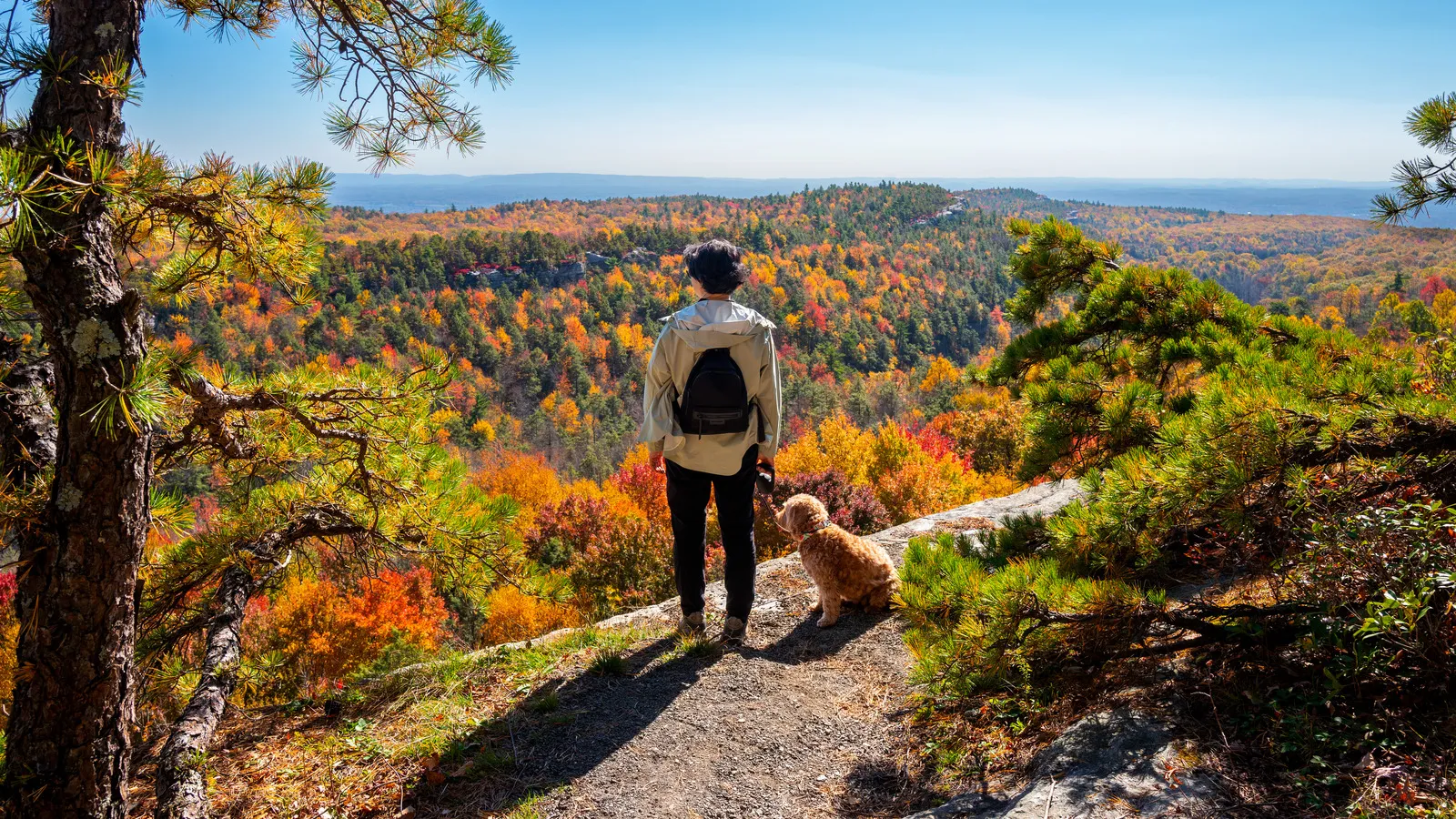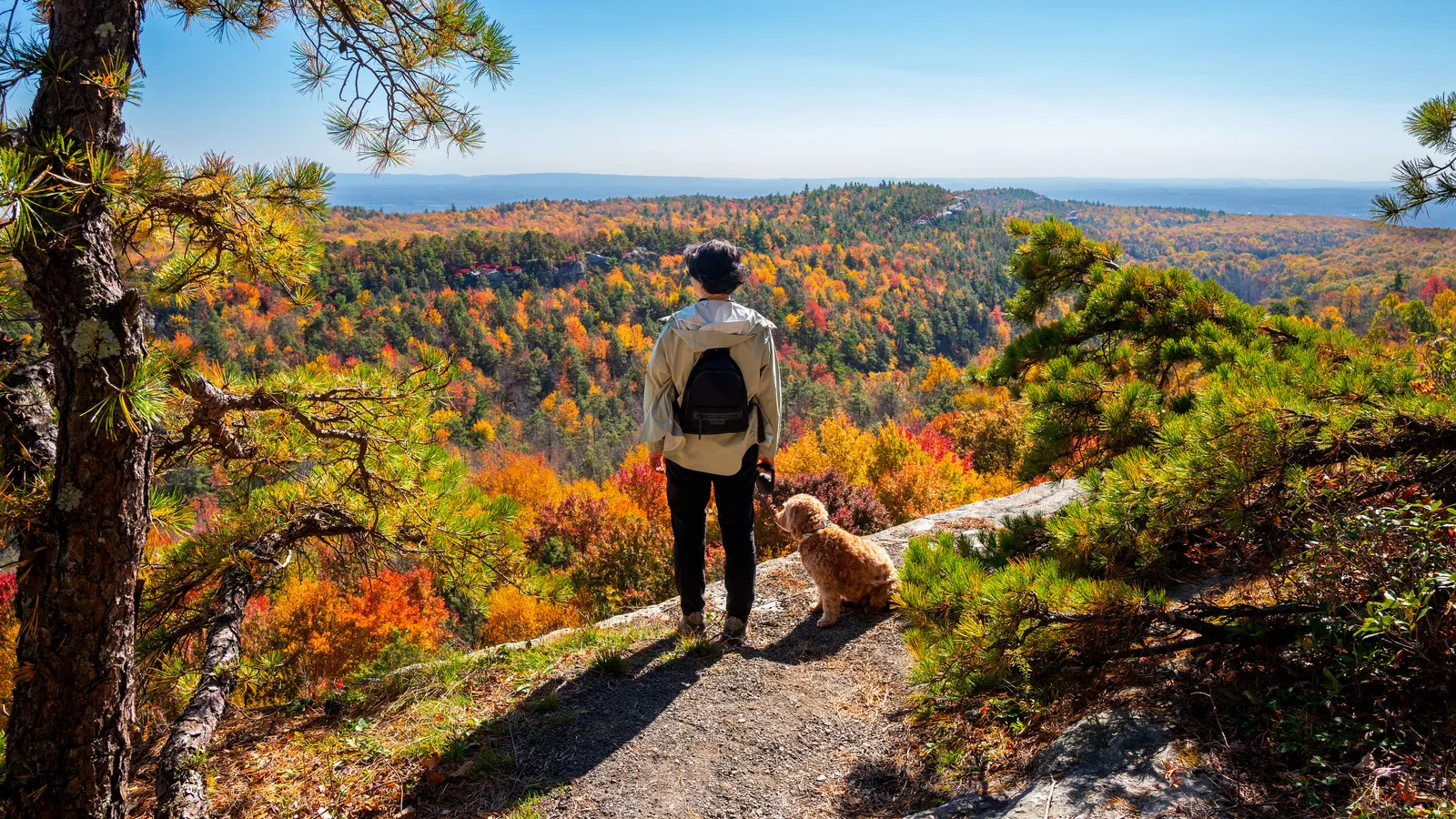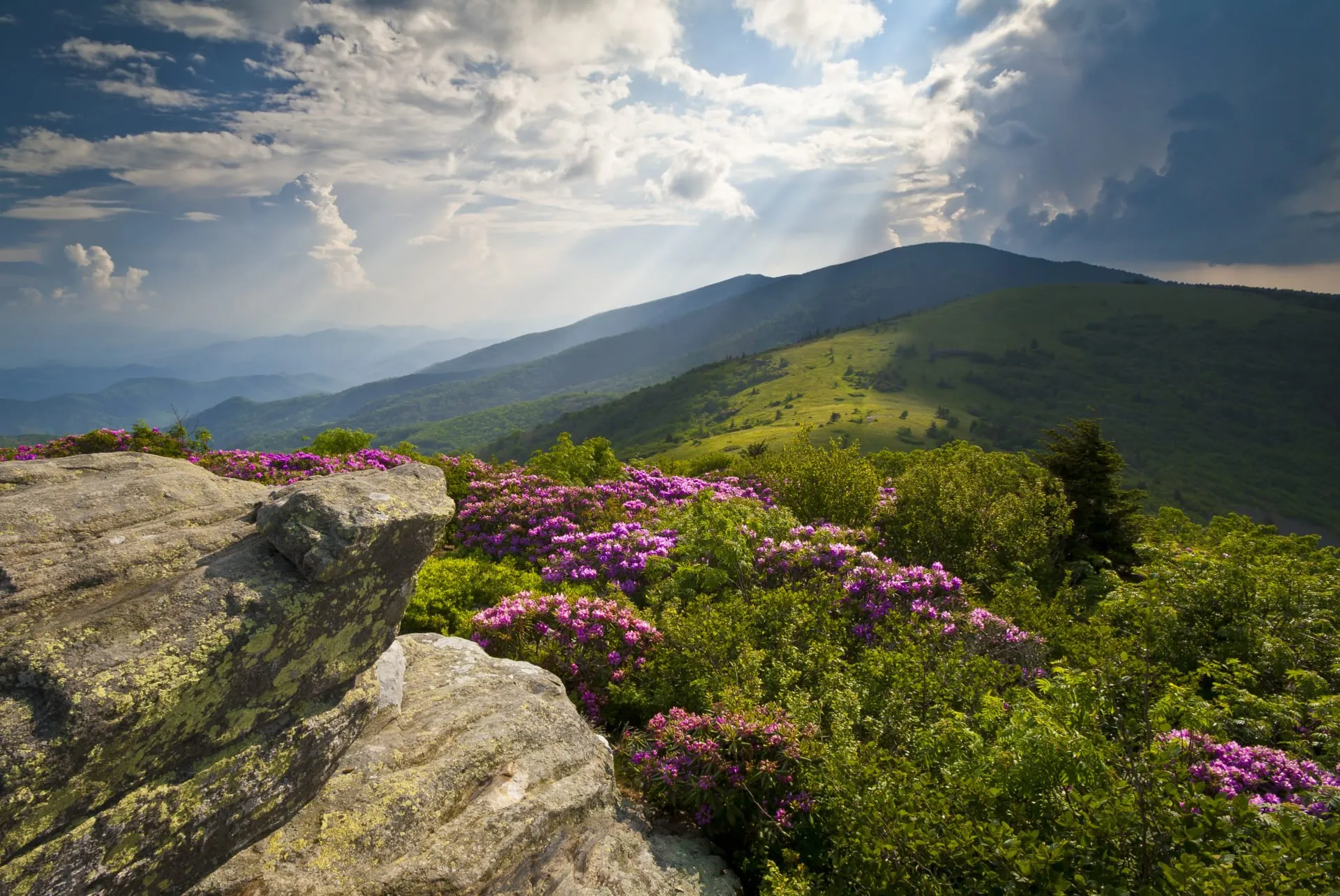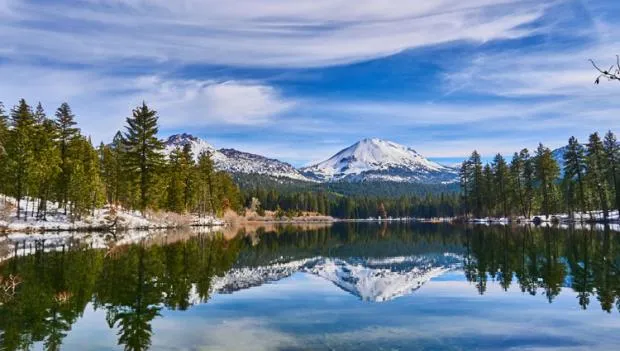
The Ultimate Guide to Beginner Hiking Trails: 25 Perfect Trails to Start Your Adventure
Discover America's most beautiful and accessible beginner hiking trails that will ignite your passion for the outdoors. From breathtaking mountain vistas to serene lakeside paths, these carefully selected trails offer the perfect introduction to hiking while ensuring your safety and enjoyment. Whether you're seeking adventure-filled weekends or peaceful nature escapes, this comprehensive guide provides everything you need to start your hiking journey with confidence.
Getting Started with Beginner Hiking Trails
Embarking on your first hiking adventure can feel overwhelming, but choosing the right beginner hiking trails makes all the difference. As someone who's guided countless newcomers through their first outdoor experiences, I've learned that the perfect starter trail combines stunning scenery with manageable challenges.
The key to successful beginner hiking lies in understanding what makes a trail suitable for newcomers. Beginner hiking trails typically feature well-maintained paths, minimal elevation gain, clear trail markers, and distances under 5 miles. These characteristics ensure you can focus on enjoying nature rather than worrying about navigation or exhaustion.

Pro Tip
Start with trails rated "Easy" that are 2-3 miles long with less than 500 feet of elevation gain. This allows you to build confidence and endurance gradually while discovering your hiking preferences.
East Coast Beginner Trails
1. Acadia National Park - Ocean Path (Maine)
Distance: 2.2 miles | Difficulty: Easy
This stunning coastal trail offers breathtaking Atlantic Ocean views with minimal elevation gain. Perfect for beginners who want to experience Maine's rugged coastline without challenging terrain.
2. Shenandoah - Limberlost Trail (Virginia)
Distance: 1.3 miles | Difficulty: Easy
A peaceful loop through ancient hemlock forest with accessible boardwalks. This trail showcases the Appalachian Mountains' natural beauty while remaining completely manageable for new hikers.
3. Great Smoky Mountains - Gatlinburg Trail (Tennessee)
Distance: 1.9 miles | Difficulty: Easy
The only paved trail in the park, perfect for beginners and families. Follows the West Prong Little Pigeon River with opportunities to spot wildlife and enjoy mountain stream sounds.
The East Coast offers some of America's most accessible beginner hiking trails, particularly within the well-developed national and state park systems. These trails often feature excellent facilities, including visitor centers, restrooms, and detailed trail maps. Many East Coast beginner trails also provide exceptional experiences in national parks where you can combine hiking with educational opportunities.
West Coast Adventure Trails

West Coast beginner hiking trails offer unparalleled diversity, from redwood forests to coastal cliffs. The mild climate allows for year-round hiking, making these trails perfect for building your outdoor skills and confidence.
4. Muir Woods - Main Trail (California)
Distance: 2 miles | Difficulty: Easy
Walk among ancient redwoods on this flat, well-maintained trail. The cathedral-like grove provides a mystical hiking experience that's perfect for beginners and incredibly Instagram-worthy.
5. Olympic National Park - Marymere Falls (Washington)
Distance: 1.8 miles | Difficulty: Easy
A gentle forest trail leading to a spectacular 90-foot waterfall. The lush temperate rainforest setting makes this one of the most beautiful easy hiking trails with waterfalls.
6. Point Reyes - Earthquake Trail (California)
Distance: 0.6 miles | Difficulty: Very Easy
Learn about the 1906 San Francisco earthquake while enjoying coastal views. This educational trail is perfect for those seeking short and easy hiking trails.
Midwest Hidden Gems
7. Starved Rock State Park - French Canyon (Illinois)
Distance: 1.2 miles | Difficulty: Easy
Explore dramatic sandstone canyons and seasonal waterfalls. This trail showcases the unexpected beauty of Illinois geology and is perfect for beginner hikers seeking adventure close to Chicago.
8. Pictured Rocks - Miners Falls (Michigan)
Distance: 1.2 miles | Difficulty: Easy
A short walk through northern Michigan forest to a stunning 50-foot waterfall. The trail offers glimpses of Lake Superior's dramatic coastline and represents some of the best easy hiking trails in the Great Lakes region.
9. Devil's Lake State Park - Tumbled Rocks Trail (Wisconsin)
Distance: 1.5 miles | Difficulty: Easy
Circle Wisconsin's most popular lake with stunning bluff views. This trail combines accessibility with breathtaking scenery, making it ideal for families and beginner hikers.
Midwest beginner hiking trails often surprise visitors with their beauty and diversity. From the Great Lakes shorelines to prairie landscapes, these trails offer unique ecosystems and geological features. Many Midwest trails are excellent for family-friendly hiking experiences due to their gentle terrain and educational opportunities.
Southwest Desert Trails
10. Zion National Park - Riverside Walk (Utah)
Distance: 2.2 miles | Difficulty: Easy
A paved path alongside the Virgin River leading to the famous Narrows entrance. This trail showcases Zion's towering sandstone cliffs and provides an excellent introduction to desert hiking.
11. Grand Canyon - Rim Trail (Arizona)
Distance: 2.5 miles | Difficulty: Easy
Experience America's most iconic canyon with minimal effort. This mostly flat trail offers numerous viewpoints and represents the ultimate introduction to Southwest landscapes.
12. Bryce Canyon - Rim Trail (Utah)
Distance: 2.7 miles | Difficulty: Easy
Marvel at colorful hoodoos and rock formations from the canyon rim. This trail provides spectacular photo opportunities and is perfect for those seeking easy hikes with scenic views.
Essential Hiking Gear for Beginners
Proper gear can make or break your first hiking experiences. After years of guiding beginners on trails across America, I've identified the essential items that every new hiker should consider. You don't need expensive equipment to enjoy beginner hiking trails, but having the right basics ensures comfort and safety.
Hiking Footwear
Proper footwear is your most important investment. For beginner trails, you don't need expensive boots, but you do need shoes with good grip and support.
Perfect for day hikes with rain cover included
Hydration System
Staying hydrated is crucial on any trail. A good hydration backpack makes drinking water effortless while hiking.
Highly rated with 2K+ purchases monthly
Trekking Poles
Even on easy trails, trekking poles provide stability and reduce joint stress, especially beneficial for beginners building confidence.
Professional quality with built-in rain cover
Safety Essentials
Basic safety items can handle minor injuries and emergencies. Always carry a first aid kit, even on short beginner trails.
Includes safety features and phone holders
Sun Protection
UV protection is essential at any elevation. Bring sunscreen, sunglasses, and a hat for comfortable hiking experiences.
Amazon's Choice with 4K+ monthly purchases
Budget-Friendly Gear Tips
Start with basic, affordable gear and upgrade as you discover your hiking preferences. Many beginners make the mistake of buying expensive equipment before understanding their needs. Focus on comfort, safety, and functionality over brand names.
Safety Tips for New Hikers
Safety should always be your first priority when exploring beginner hiking trails. Even on easy trails, proper preparation and awareness can prevent most hiking accidents. I've seen too many preventable incidents that could have been avoided with basic safety knowledge.
Essential Safety Practices
- Tell someone your plans: Always inform someone about your hiking route and expected return time
- Check weather conditions: Avoid hiking during storms or extreme weather
- Start early: Begin hikes early in the day to avoid afternoon thunderstorms
- Stay on marked trails: Prevent getting lost by following designated paths
- Carry extra water: Bring more water than you think you'll need

Emergency Preparedness
Always carry a fully charged phone, basic first aid supplies, and emergency whistle. Even on flat hiking trails for easy walks, injuries can occur. Consider downloading offline maps and learning basic first aid before your first hike.
My Personal Experience with Beginner Hiking Trails
"My first hiking experience was a disaster. I attempted a 'moderate' trail with sneakers, a plastic water bottle, and zero preparation. Within an hour, I had blisters, was dehydrated, and completely lost my enthusiasm for hiking. It took me two years to try again, but this time I started with proper beginner hiking trails."
This humbling experience taught me the importance of starting small and building confidence gradually. My second attempt was on the Riverside Walk in Zion National Park – a perfectly maintained, flat trail with stunning scenery. That successful hike ignited my passion for the outdoors and led me to explore hundreds of trails across America.
Over the past decade, I've introduced over 200 people to hiking through guided trips on carefully selected beginner trails. I've learned that the key to creating lifelong hikers is matching people with appropriate trails and ensuring their first experiences are positive and confidence-building.
Lessons Learned from Guiding Beginners
The most successful beginner hiking experiences happen when people choose trails that match their fitness level and interests. I've seen confident athletes struggle on technical trails, while cautious beginners thrive on easy nature trails designed for families. The key is honest self-assessment and choosing trails that challenge you appropriately without being overwhelming.
Sarah M. - First-time Hiker
"The Limberlost Trail in Shenandoah was perfect for my first hike. The boardwalks made me feel secure, and the forest was magical. I've now hiked 15 trails and love every minute!"
Mike T. - Fitness Enthusiast
"I thought hiking would be easy because I run marathons. The Ocean Path in Acadia taught me that hiking uses different muscles and skills. Great introduction to outdoor adventure!"
Linda K. - Retiree
"At 68, I thought I was too old to start hiking. The Rim Trail at Grand Canyon proved me wrong. Now I'm planning hiking trips across the country with my hiking group!"
Seasonal Hiking Guide
Spring Hiking
Perfect for beginners with mild temperatures and blooming wildflowers. Many trails are accessible after winter snow melts, offering fresh scenery and comfortable conditions.
Summer Hiking
Start early to avoid heat and crowds. Focus on shaded forest trails or high-elevation routes. Carry extra water and consider pet-friendly easy hikes for family adventures.
Fall Hiking
Ideal conditions with cooler temperatures and spectacular foliage. Popular trails get crowded, so consider less-known beginner routes or hike during weekdays.
Winter Hiking
Requires more preparation but offers unique beauty. Stick to lower elevation trails and always check conditions. Consider easy forest hiking trails for winter adventures.
Frequently Asked Questions
What makes a trail suitable for beginners?
Beginner-friendly trails typically feature well-maintained paths, minimal elevation gain (under 500 feet), clear trail markers, and distances under 5 miles. These characteristics allow new hikers to focus on enjoying the experience rather than worrying about navigation or physical challenges. The best beginner hiking trails also offer interesting features like waterfalls, scenic overlooks, or unique geological formations to maintain engagement and motivation throughout the hike.
How should I prepare for my first hiking experience?
Start with physical preparation by walking regularly and building your endurance gradually. Research your chosen trail thoroughly, including weather conditions, trail conditions, and required permits. Pack essential gear including proper footwear, adequate water, snacks, sun protection, and basic first aid supplies. Most importantly, choose a trail that matches your current fitness level and don't attempt to prove anything on your first hike. Success builds confidence for future adventures.
What's the ideal distance for a first-time hiker?
For absolute beginners, I recommend starting with trails between 1-3 miles with minimal elevation gain. This distance allows you to experience the joy of hiking without overwhelming physical demands. As you build confidence and endurance, you can gradually increase distance and difficulty. Remember that hiking pace is typically slower than walking pace, so a 2-mile trail might take 1-2 hours depending on terrain, stops for photos, and your personal pace.
Is it safe to hike alone as a beginner?
While solo hiking can be rewarding, beginners should consider hiking with experienced friends or joining local hiking groups initially. If you do hike alone, choose popular, well-traveled trails during daylight hours, tell someone your plans, carry a charged phone, and stick to marked paths. Many parks offer ranger-led hikes that provide excellent learning opportunities for beginners. Building experience and confidence with others before attempting solo hikes is the safest approach.
What should I do if I get lost on a trail?
If you realize you're lost, stop immediately and don't panic. Stay calm and retrace your steps to the last known landmark or trail marker. Use your phone's GPS or a trail app to determine your location, but don't rely solely on technology. If you can't find your way back, stay put and call for help. This is why telling someone your hiking plans is crucial. Prevention is key: pay attention to trail markers, take photos at trail junctions, and turn around occasionally to see what the trail looks like on your return trip.
How much water should I bring on a beginner hike?
A general rule is to bring one liter of water for every two hours of hiking, but this varies significantly based on weather, altitude, and individual needs. In hot weather or at high altitude, you'll need more. For beginner trails lasting 2-4 hours, I recommend carrying 1-2 liters of water. It's better to carry too much water than too little, especially when you're learning to gauge your hydration needs. Consider electrolyte supplements for longer hikes or hot weather conditions.
What's the best time of day to start hiking?
Early morning starts (7-9 AM) are ideal for several reasons: cooler temperatures, fewer crowds, better wildlife viewing opportunities, and avoiding afternoon thunderstorms. Starting early also gives you plenty of daylight hours and time to rest if needed. However, the "best" time depends on your schedule, the specific trail, and seasonal considerations. In winter, later starts may be necessary for warmer temperatures and better visibility. Always plan to finish your hike with at least 2 hours of daylight remaining.
Conclusion
Starting your hiking journey with the right beginner hiking trails can transform your relationship with the outdoors forever. The 25 trails featured in this guide represent the best introduction to America's diverse landscapes, from coastal paths to mountain vistas, desert canyons to forest sanctuaries.
Remember that every expert hiker started as a beginner, and the most important step is simply getting started. Choose trails that match your current fitness level, invest in basic safety gear, and most importantly, focus on enjoying the experience rather than conquering challenging terrain. The trails will always be there, and you'll have plenty of time to tackle more difficult adventures as your skills and confidence grow.
Whether you're drawn to the easy hiking trails near your location or planning a cross-country adventure to experience different ecosystems, the key is consistency. Regular hiking, even on familiar trails, builds the physical fitness, mental resilience, and outdoor skills that will serve you throughout your hiking journey.
Happy trails, and remember: the best hike is the one that brings you safely back with a smile on your face and plans for your next adventure!

